On The Alchemy of Soil

Earth. Soil. Dirt. Growing substrate. Creative medium. Entire universes underfoot. My journey through, alongside, and within soil has been an arduous, often back-breaking, filthy, truly rewarding endeavor. My experience as an artist who utilizes earth as a medium is continually evolving, expanding, decaying, and being reborn with each new collaboration and community. From science to play, ritual to labor, the ecologies to the economics, making art in earth is an attempt to re-forge connections to the natural world, and through this process, to each other. Somewhere amidst these attempts, I meandered into rural Wisconsin, where creating a work of land art—the Sauk County Agricultural Recon Kraft, or ARK—with local farmers has been a transformational collaboration of land, art, and agriculture.
Part Vagabond, Part Tinkerer
At age 38, in Suzanne Lacy’s MFA Public Practice program at Otis College of Art and Design in Los Angeles, my thesis project set me on a path drenched in sweat and mud, working the earth, growing and nurturing, bringing hands together in the dirt, a newfound responsibility. I created my first earthwork and then wondered, “Now what do I do with all this used soil?” In an attempt to recycle it, I began building gardens on the street outside my apartment.

Two pivotal moments resulted that shaped my art practice to this day. The first occurred when I realized I was eating fresh produce I grew from the street every day, for free. The possibilities surrounding the use of public space exploded in my practice, eventually leading me to issues of public health, food insecurity, and food sovereignty. The second moment occurred over time as the pan-cultural nature and joy of growing food allowed me to develop a new dialogue with my surrounding community. Fostering community building through agricultural ritual and play became a central premise in my work.
Accelerating this liberating fascination with agriculture, sustainability and eco-literacy, Mel Chin’s Fundred Dollar Bill Project thrust me into the driver’s seat of a vintage armored truck and launched me on a fantastic voyage. Even after my role in the project ended six months later, I was cast adrift. Like Odysseus, I wandered for ten years as I developed an itinerant art practice. My traditional ways of living changed as I adapted to transience and a state of flux. My life and practice became stripped down. Part vagabond, part tinkerer, part stray, semi-feral and hungry, I moved fluidly between the rural and the urban, the cultured and the wild. My creative work found fertile ground in the High Sierras and Death Valley, subtropical Florida beach towns and the high plains of Colorado.
Landing in Driftless Farm Country
Adrift for a decade, the currents of public art and wanderlust cast me ashore in 2020 in the farm fields of Sauk County, in the Driftless Area of Wisconsin at the Wormfarm Institute’s Artist Residency program. Here, working in the gardens, communing with the ruins of an old farm and connecting with artists in the program, I finally found the internal space and time to develop a relationship with place, this place. In Sauk County, my connection to my practice and to the soil began to shift and broaden as I calmed and put my feet on the ground.

The mission of the Wormfarm Institute—rebuilding bridges between the rural and the urban, celebrating rural and farm culture, reinforcing cultural infrastructure in rural areas—put me into conversations with farmers, agronomists, practitioners of the fermented arts, fellow artists, and funneled my expanding interest in this place directly into the 2020 Farm/Art DTour. I found myself fairly shocked to learn a little about contemporary agricultural practices and their effects on the environment, climate, rural economics and farm life. But I also became interested in the growing movement towards diversity, agroforestry and perennial agriculture as regenerative practices in farming.
Hello, Kernza
These conversations led me to Dr. Valentin Picasso—an agronomy professor at the University of Wisconsin-Madison—and thus to the story of Kernza, or intermediate wheatgrass. Kernza is the product of an on-going breeding project out of the Land Institute. It is a perennial grain, a truly unique character amidst the cast of monoculture annual grains that dominate modern agriculture in the U.S. Midwest. It is Kernza’s perennial nature that is generating a cult following among researchers, growers, businesses, and consumers who seek more sustainable food systems. As a perennial, Kernza grows a deep root system that provides continuous soil cover, which is no small matter when it comes to combatting rampant issues of soil erosion and water pollution.

My dialogue with Dr. Picasso expanded to include the Alma and William Gasser farm family and the teachers at Tower Rock Elementary School. The Gassers have farmed their land since 1872 and now also grow and mill grains for their family-owned Tower Rock Farmstead Bakery. The elementary school is located across the street from the bakery and farmstead. This seemed the ideal geometry for a community-based, agricultural, land art project. The Sauk County ARK project soon coalesced.

Given my proclivity for playing in the dirt with the seeds and the worms and the birds, the ARK was born from the desire to create a space where one could sit in the peace of growing plants, at the edge of the forest, and contemplate where the wild things and the cultivated things flirt. A space to bask in the calm and beauty of this place while being encouraged to rebelliously wonder about more- perennial grains, regenerative agriculture, climate crisis. A space for alchemy—if I can reshape this farmland into a ship that represents agricultural transition, can we not reshape societal thinking on how we address land, food production, and farmers?
The Journey of the Sauk County ARK
That fall of 2020, the Sauk County ARK rose from fifty cubic yards of shaped earth, salvaged Harvestore panels and silo staves, old dairy headgates and other decrepit farm detritus. At once living earthwork, garden, and public space, she is intended to be inhabited and to spur reflection upon the surrounding environment. Now in her third year, the bowsprit juts due north out over four acres of established Kernza planted with the Gassers and Dr. Picasso. The ARK is at once a landlocked shipwreck harkening back to old agricultural practice and a vessel heralding the urgency of regenerative agricultural practices. But more than this, the ARK has become a series of relationships, between art and agriculture, between the soil and the perennial wheatgrass, between the artists, farmers and cultural generators who are now engaged in a dialogue that will long outlive the earthwork itself.

In summer 2021, kindergarten through third grade students from Tower Rock Elementary came out to the ARK site for summer art interactions. Together we made mud bricks impregnated with cover crop seeds and built peripheral little earthworks with sunflowers and moonflowers that gradually grew and thrived and then decayed back into the terrain.

The year of 2021 also saw the first harvest from the ARK. With it came the difficulties of growing and processing Kernza. The field surrounding the ARK was planted in winter wheat prior to Kernza. As a result, competition between the young Kernza and volunteer wheat required separation of the harvested grains, even though the wheat was viable and not of negligible quantity. Kernza also needs to be hulled, which requires equipment not readily available. For the following year’s harvest, farmers—who are some of the most innovative and skilled people I know—repurposed a large leaf vacuum into a marvelously effective hulling machine.
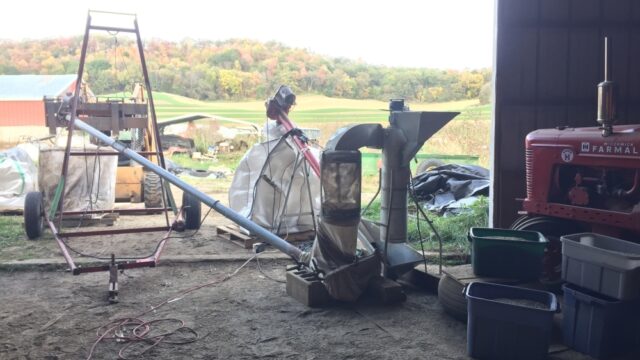

Heading into this 2022 season for the ARK and the 2022 DTour, I aspired to bring the project full circle. This year’s crop was looking fuller, cleaner and dominant in its four acres. To me, this was the year to create from what we had planted, to mill flour from the grain and bake with it. But as my conversations had expanded over two years on the project, that idea expanded as well and we decided the cycle should include another pass through the main element of the project: soil. From seed to soil to grain to soil to food, as guided by human hands. We decided we needed to build an earthen oven from the land that grew the Kernza to use as our crucible.
A neighboring farm family, the Enges, whose land abuts the Gasser farm, had already found a clay deposit in anticipation of their own cob oven. So we mined the rich rust red clay, welded out a trailer to make it mobile, and began crafting the oven. Mixing the clay with Kernza straw from the first harvest and embedding bottles into it for insulation, the dome of the oven is nearly complete and ready to bake crackers and short breads with Kernza flour milled from the site during the weekend activities at this year’s DTour. Additionally, Vintage Brewing Company brewed 480 lbs of our raw Kernza grain into an experimental small batch of Kernza beer for the DTour beer garden.
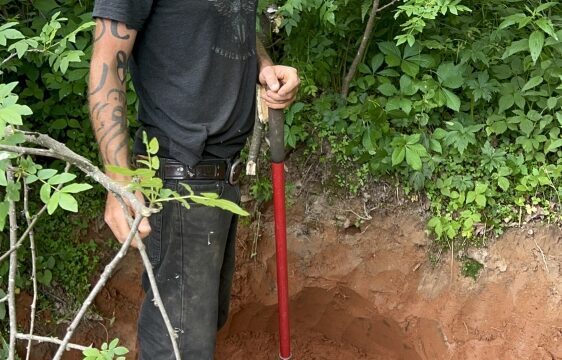
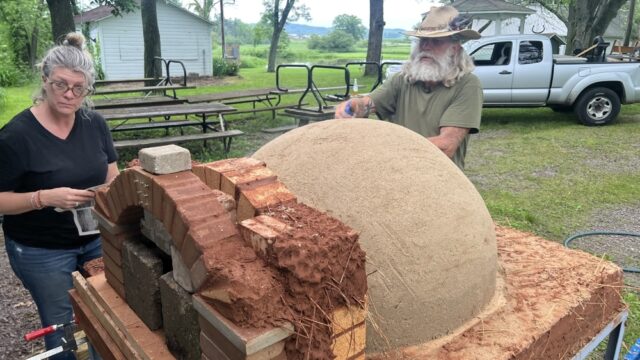
When we started the ARK, we were exploring many unknowns and possibilities. Even the earthwork, the most stable build of the project, was subject to the overarching consequences of collaborating with nature. Twice massive rainfalls caused the resulting mud to buckle the thick steel of the Harvestore panels. Deer made paths over the site and nibbled my sunflowers. Various heretofore unidentified scoundrels tunneled into the sides of the ARK for luxurious in-field homes. And the process of harvesting and cleaning the Kernza was a long, laborious, and fraught process. In the end, we harvested enough grain after two years to make some beer and savory crackers and offer up some flour to the DTour travelers.
The Alchemy of Community
The heart of the matter comes down to the relationships developed with our farming collaborators. Working with Willaim Gasser was a joy, as he shared with me his family history, knowledge of farming, and his creative ideas for the project. In my line of work, his ideas were a breath of fresh air amidst the “creative genius” bullshit of the art world. The Gassers have no bulls. Over time, I also got to know Alma, the matriarch of the bakery and truly a baking paragon. As Kernza went from the field to the kitchen, we were able to expand our dialogue by exploring ideas of baking with Kernza. And now, in this pivotal third season, I have also developed a beautiful relationship with their son, Dean. While Dean has left the family farm, we contract him directly to service the Kernza field and he became the main fabricator of the ARK oven. Dean and I have engaged in hours of lovely conversation, between artist and farmer, that remind me what is truly important about this work—connections between people and connections between people and the earth.
As we wrap up this season of the ARK, decorating the mud oven and cleaning the grain, researching Kernza recipes, I have gratitude for the communities that helped bring this cycle to fruition—the communities within soil, within my own body, within this extended farming family, and the creative community who facilitated the entire process, all intertwined, inherently connected. I am imparted with me a responsibility to manifest this alchemy, connecting communities with the land through agricultural ritual, ecological poetics, and scientific theater, launching a thousand journeys down yet undiscovered dirt paths. Soil, seed, water, microorganisms and creative design—these are the elements that come together to form the crucible of community. And now, after a decade long journey through soil in every part of this country, this constellation of communities calls me home, here to Sauk, Kernza, and rural creativity.
Featured Image: Sign for the Sauk County Ark. Photo by Author, October 2021.
The Wormfarm Institute’s 2022 Farm/Art DTour ran October 1st to 9th in Sauk County, WI. The ARK featured a new Earthtones listening station at the site and the ARK oven was fired up and baking at the Witwen Tabernacle. As part of the 2022 4Ground Land Art Biennial, Tory also has an earthwork—Vortex to a Future Canoe—growing paper birch trees as a link between Indigenous knowledge and impending climate crisis, located in the wetlands of Witwen, WI.
Tory Tepp is a multidisciplinary artist working at the intersection of land art, agriculture, and social engagement. Tory earned a BFA in Painting with a minor in Non-traditional Art Histories from Parsons School of Design in New York. He holds an MFA in Public Practice from Otis College of Art and Design in Los Angeles. Contact. Website.
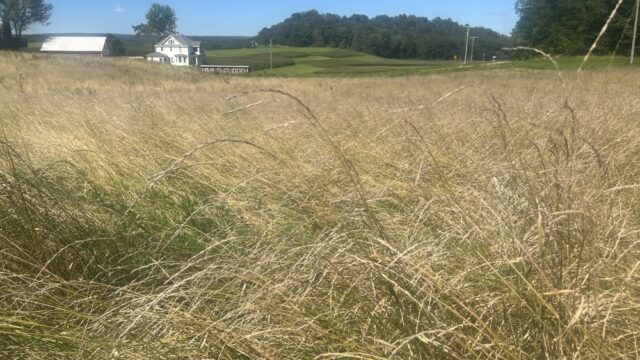

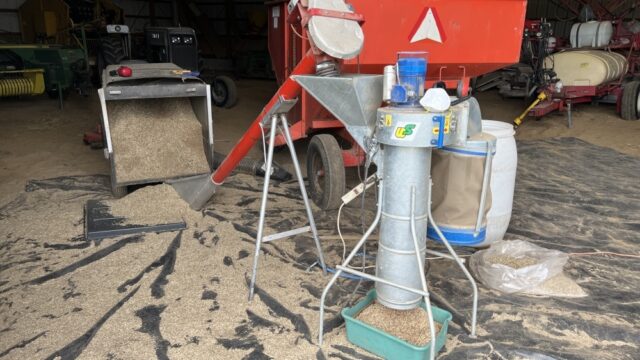
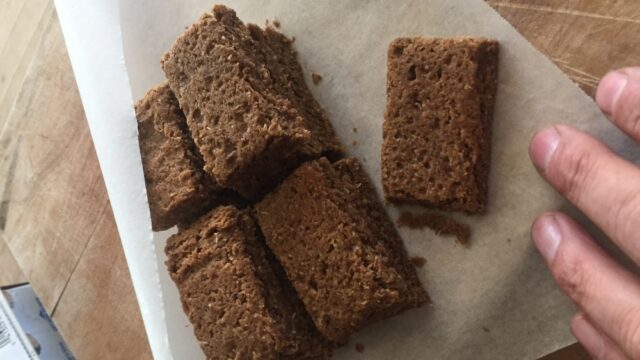
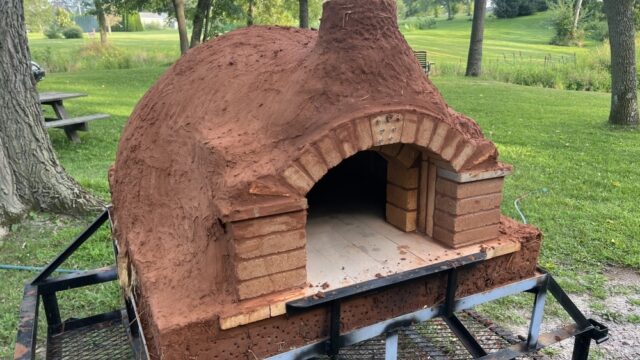
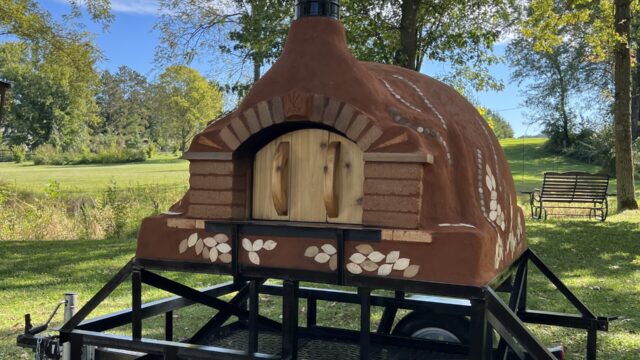
You must be logged in to post a comment.